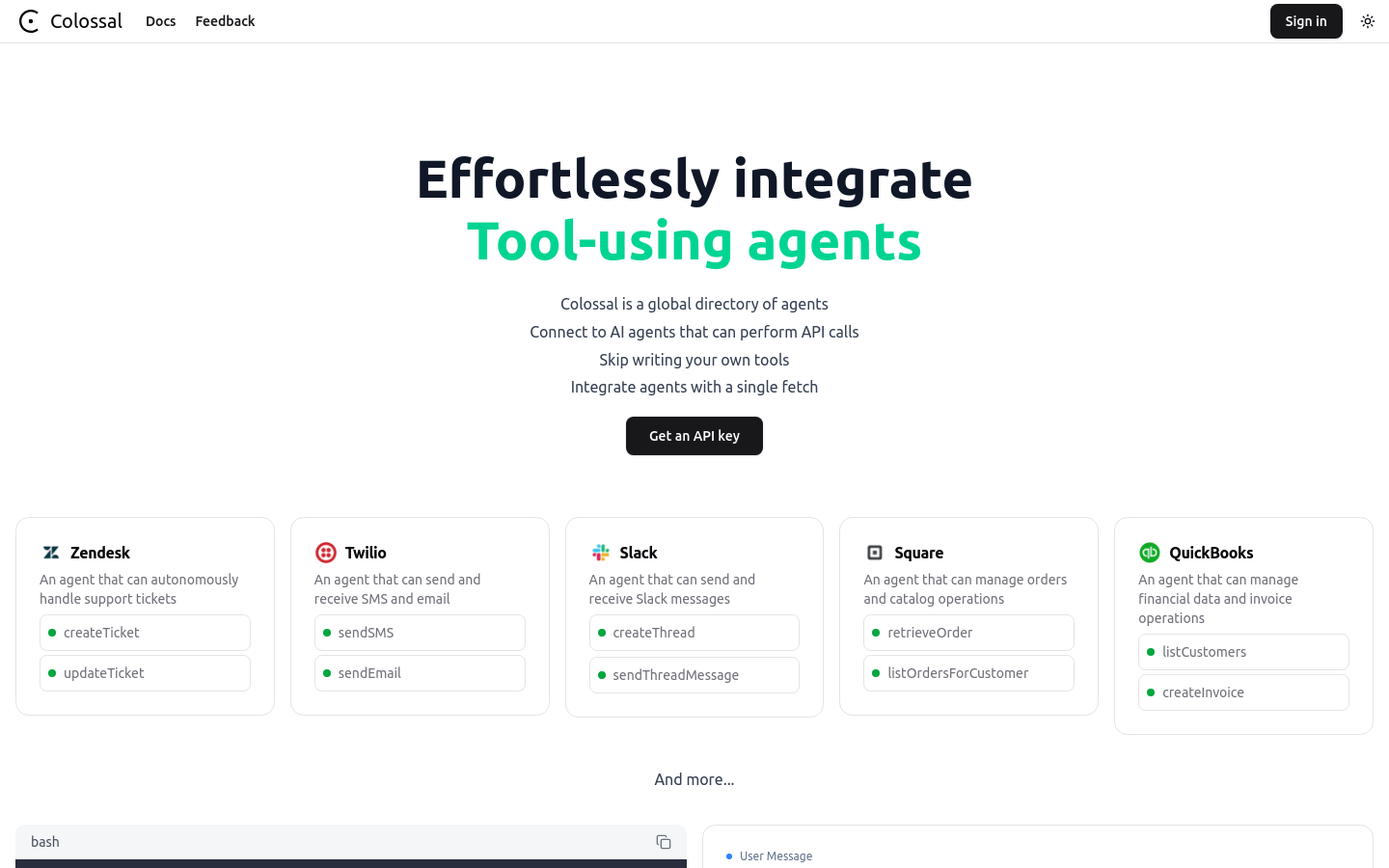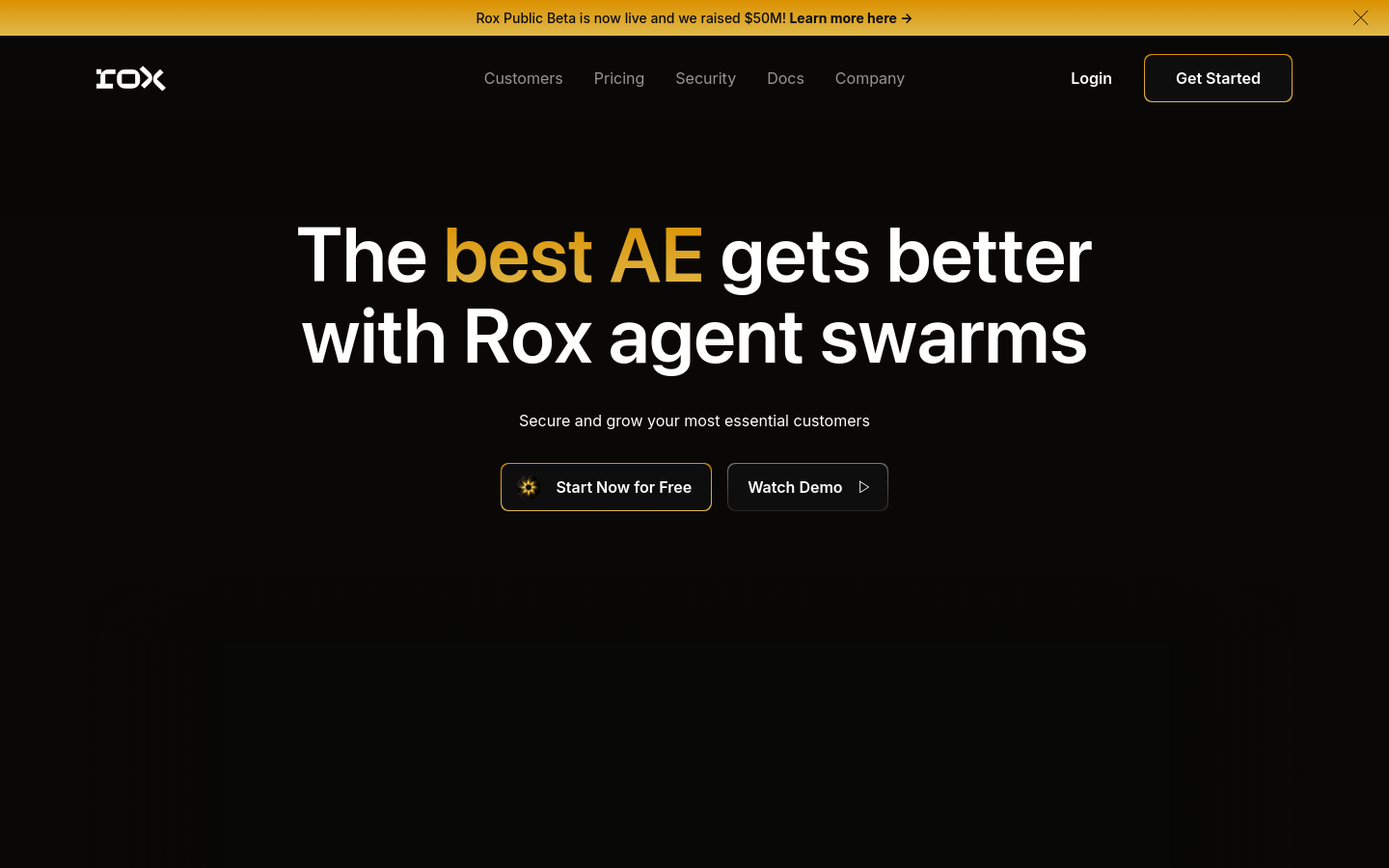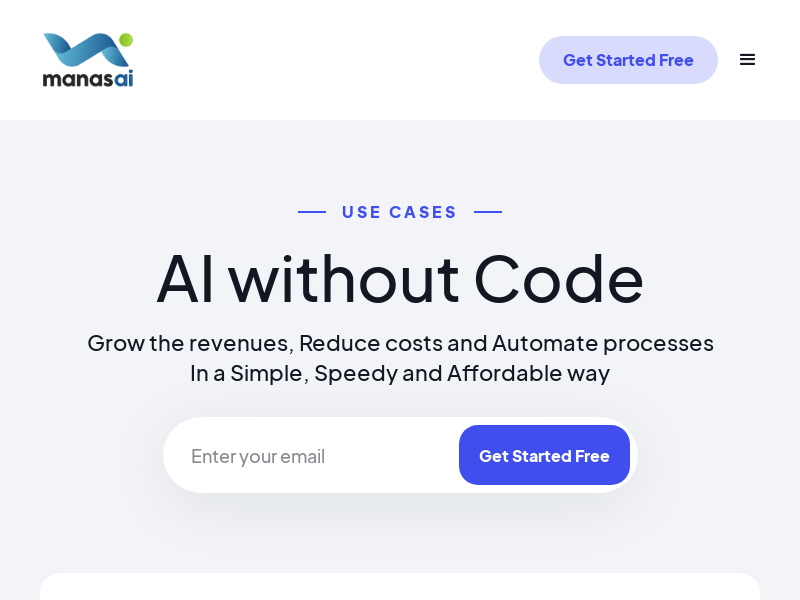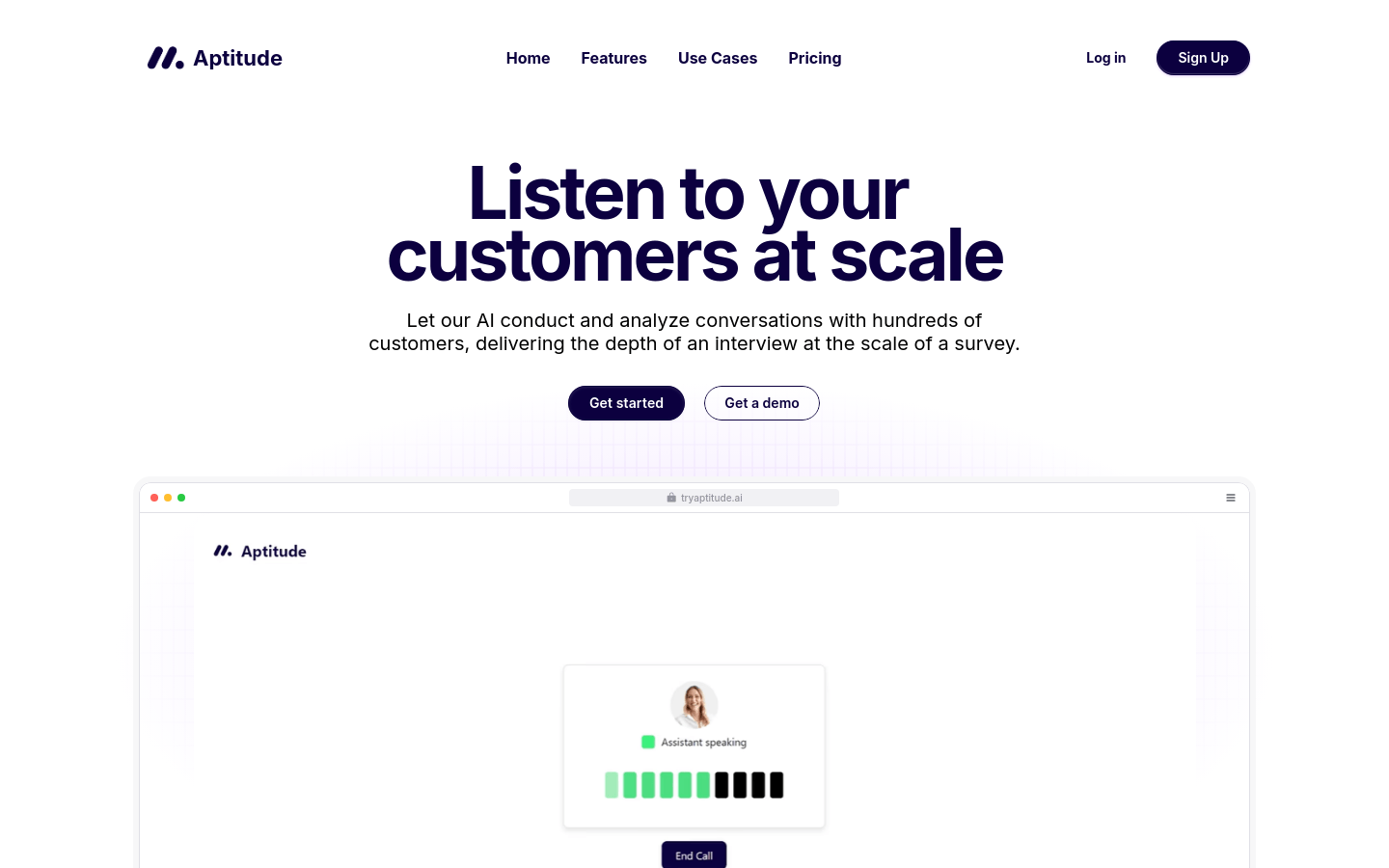
Colossal provides a global proxy directory that allows users to easily connect and integrate various AI proxies that can execute API calls, simplifying the tool development process. It provides business users with an efficient way to manage and automate common business processes such as customer support, messaging and order management. Through integration with multiple well-known platforms such as Zendesk, Twilio, Slack, etc., Colossal helps enterprises save development time and costs while improving operational efficiency. Its positioning is to provide business users with a one-stop AI agent integration solution. The price strategy has not yet been clarified, but it is expected to charge based on usage or enterprise scale.
Demand population:
" Colossal is suitable for enterprise users who need to efficiently manage and automate business processes, especially those looking to reduce tool development costs and increase operational efficiency. It can help businesses quickly integrate multiple AI agents, thereby optimizing key business links such as customer support, messaging and order management."
Example of usage scenarios:
Use Colossal to integrate with Zendesk to automatically create customer support tickets and improve customer satisfaction.
Send marketing text messages or notification emails through Twilio integration to optimize customer communication processes.
Use Slack integration to quickly convey important information into the team and improve collaboration efficiency.
Product Features:
Support integration with Zendesk to automatically process customer support tickets
Supports integration with Twilio to send and receive SMS and emails
Supports integration with Slack to send and receive Slack messages
Supports integration with Square to manage order and directory operations
Supports integration with QuickBooks to manage financial data and invoice operations
Tutorials for use:
1. Visit https://www.Colossalhq.com/ and obtain the API key.
2. Select the agent to integrate (such as Zendesk, Twilio, etc.) as needed and obtain the corresponding API credentials.
3. Integrate the agent into your system using the provided API call sample code.
4. Configure proxy options such as tool call flow control and maximum step limit.
5. Send user messages to the proxy, and the proxy will automatically perform relevant operations and return the results.







